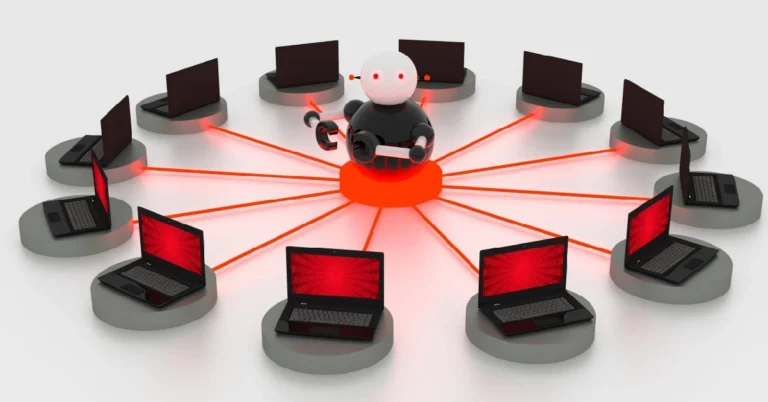


A botnet is a network of internet-connected devices — computers, smartphones, servers, and IoT gadgets — that have been compromised and are remotely controlled by a malicious actor.
Each compromised device, known as a “bot” or “zombie,” operates under the attacker’s command, often without the owner’s knowledge.
Botnets pose a serious threat because they aggregate thousands of devices, enabling cybercriminals to launch large-scale attacks, distribute malware, steal data, or mine cryptocurrency far beyond what a single device could achieve. At StrongBox IT, we help organisations counter these threats with reliable endpoint security, advanced threat detection, and continuous monitoring.
1. Infection
Attackers infect devices through malware — often via phishing emails, malicious downloads, or exploitation of vulnerabilities in unpatched software or weakly secured IoT devices (e.g. routers, cameras, smart-home gear).
2. Command & Control (C&C) Setup
Once infected, each device connects to a command infrastructure controlled by the attacker. Historically this was a single server; modern botnets often use decentralized or peer-to-peer (P2P) models to remain resilient and harder to take down.
3. Remote Control & Coordination
Through the C&C infrastructure, the attacker sends instructions — instructing all or selected bots to perform tasks such as sending spam, launching attacks, or harvesting credentials. Because commands come from real devices across the globe, malicious traffic tends to blend with legitimate traffic, making detection harder.
4. Automation & Persistence
Many botnets continuously evolve: they can update themselves, change their command servers if blocked, and use evasion techniques (such as encrypted traffic, randomized behaviors, domain-generation algorithms) to stay hidden.

Botnets come in several forms, each differing in how they communicate, spread, and execute commands. The main types include:
| Type | Description |
|---|---|
| Centralized (Client–Server) | Bots rely on a single command-and-control server. Easy to manage but vulnerable — taking down the server can disable the entire botnet. |
| Peer-to-Peer (P2P) | Bots communicate and exchange commands directly with each other, making the network more robust and harder to shut down. |
| Hybrid | A combination of centralized and P2P models — initial control from a central server followed by distributed coordination among bots. |
| IoT Botnets | Formed by exploiting vulnerable IoT devices such as routers, security cameras, and smart-home gadgets that often lack proper security updates. |
| Mobile Botnets | Created by infecting smartphones and tablets, typically through malicious apps, phishing downloads, or unauthorized sideloaded software. |
Botnets pose a significant threat not just because of their size, but because of the way they operate. Their danger comes from several factors:
These practical security measures can help reduce the risk of botnet infections and keep your systems protected, with StrongBox IT enhancing your overall security posture:
In conclusion, Botnets turn everyday devices into coordinated tools for cybercriminals. Their scale, automation, and stealth make them capable of launching disruptive attacks ranging from DDoS floods to data theft and cryptojacking. Staying protected requires strong security hygiene — regular updates, strong passwords, reduced device exposure, and continuous monitoring to detect unusual activity early.
Looking to strengthen your defence against botnet threats and other cyber risks? StrongBox IT provides advanced threat detection, endpoint protection, and security monitoring to keep your organisation safe. Reach out to StrongBox IT today to build a resilient security posture.
WhatsApp us

